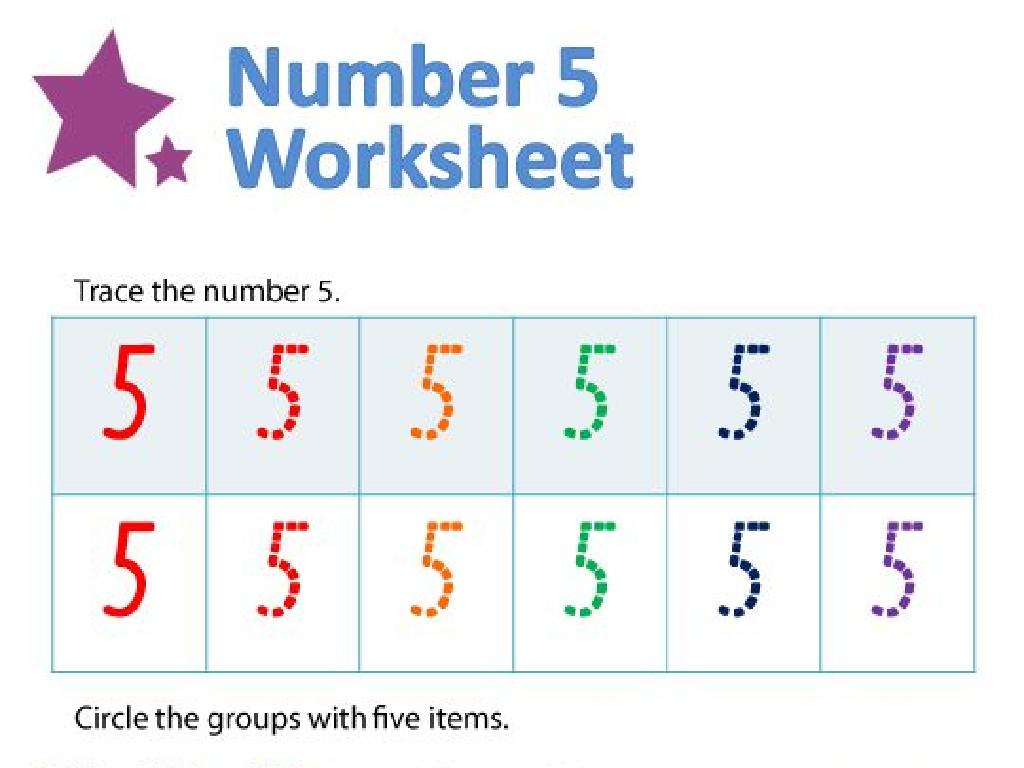Put A Mix Of Decimals And Fractions In Order
Subject: Math
Grade: Sixth grade
Topic: Fractions And Decimals
Please LOG IN to download the presentation. Access is available to registered users only.
View More Content
Ordering Fractions and Decimals
– Understand fractions and decimals
– Fractions represent parts of a whole; decimals are another way to show fractions
– Compare differences and similarities
– Both represent numbers between whole numbers but in different forms
– Convert for easy comparison
– Change fractions to decimals or vice versa to compare them
– Practice ordering mixed numbers
– Use number lines or conversion to place numbers in ascending or descending order
|
This slide introduces the concept of understanding and ordering fractions and decimals. Start by explaining that fractions are parts of a whole and decimals are another representation of these parts. Highlight how they are different in form but can represent the same values. Teach students how to convert between fractions and decimals to make it easier to compare and order them. Provide examples and practice problems where students convert and then order a mix of fractions and decimals on a number line or in a list. Emphasize the importance of mastering this skill for real-world applications, such as handling money or measuring ingredients in cooking.
Review: Fractions and Decimals
– Understanding fractions
– A fraction has a numerator (top) and a denominator (bottom).
– Decimals explained
– A decimal is another way to write fractions using place value.
– Compare fractions and decimals
– Examples: 1/2 and 0.5
– 1/2 is a fraction, and its decimal form is 0.5.
|
This slide is a review of the basic concepts of fractions and decimals. A fraction is represented by two numbers, the numerator and the denominator, with the numerator indicating how many parts of a whole are being considered, and the denominator indicating the total number of equal parts the whole is divided into. A decimal represents a fraction whose denominator is a power of 10, making it a special form of a fraction that is easier to use in calculations. Provide examples of each to illustrate the relationship between fractions and decimals, such as showing that 1/2 is equivalent to 0.5. Encourage students to practice converting between fractions and decimals to gain fluency in comparing and ordering them.
Converting Fractions to Decimals
– Divide numerator by denominator
– Example: Convert 3/4 to decimal
– Take the top number and divide by the bottom number
– 3 ÷ 4 equals 0.75
– 0.75 is the decimal form of the fraction 3/4
|
This slide introduces the concept of converting fractions to decimals, which is a fundamental skill in understanding the relationship between these two forms of numbers. Start by explaining that the numerator (top number) can be divided by the denominator (bottom number) to find the decimal equivalent. Use 3/4 as an example to show the process step by step. Emphasize that division is the key operation in this conversion. After explaining, give students a set of fractions to convert into decimals as practice. Encourage them to use calculators if necessary to check their answers and reinforce the concept.
Converting Decimals to Fractions
– Start with decimal over 1
– Multiply to remove decimal
If decimal is 0.25, multiply by 100/100 to get 25/100
– Simplify the fraction
Reduce 25/100 to its simplest form 1/4
– Example: Convert 0.25
0.25 is 25/100, which simplifies to 1/4
|
This slide introduces the process of converting decimals to fractions, a key skill in understanding the relationship between these two forms of numbers. Start by writing the decimal over 1 to create a fraction. To eliminate the decimal point, multiply both the numerator and the denominator by the same power of 10 – the number of zeros equal to the number of decimal places. For example, to convert 0.25 to a fraction, multiply by 100 to get 25/100, which simplifies to 1/4. Encourage students to practice this method with different decimals and to always simplify their answers. This will help them compare and order mixed sets of decimals and fractions with confidence.
Comparing Fractions and Decimals
– Convert to compare sizes
– Change fractions to decimals or vice versa to determine which is larger or smaller.
– Align decimal place values
– When comparing decimals, ensure each number has the same number of decimal places.
– Find common denominators
– To compare fractions, rewrite them with the same denominator before ordering.
– Order fractions and decimals
|
This slide aims to teach students the methods for comparing fractions and decimals. Start by explaining conversion between fractions and decimals to see which is larger or smaller. Emphasize the importance of lining up decimal points to compare place values accurately. When dealing with fractions, finding a common denominator is crucial for direct comparison. Finally, guide students through exercises where they put mixed decimals and fractions in order, reinforcing the techniques covered. Provide examples and practice problems to solidify their understanding.
Putting Decimals and Fractions in Order
– Convert numbers to one format
– Change all to fractions or decimals for easy comparison
– Order from least to greatest
– Line them up, compare, and rearrange accordingly
– Double-check by converting back
– Ensure accuracy by reverting to original forms
– Practice with examples
– Use classroom examples to reinforce learning
|
This slide is aimed at teaching students how to systematically arrange a mixed set of decimals and fractions. Start by converting all numbers into either all fractions or all decimals. This uniformity makes it easier to compare the numbers. Once converted, students should arrange the numbers from the smallest to the largest. After ordering, students should convert the numbers back to their original forms to check for accuracy. This reinforces their understanding of the relationship between fractions and decimals. Provide several examples for the students to practice, such as converting 1/2, 0.75, and 3/8 into decimals and arranging them, then converting back to fractions to check their work.
Ordering Decimals and Fractions
– Convert to common form
– Change fractions to decimals or vice versa
– Compare and order Example 1
– 0.3 (or 3/10), 1/4 (or 0.25), 2/5 (or 0.4) in order
– Compare and order Example 2
– 0.75, 3/8 (or 0.375), 1/2 (or 0.5) from largest to smallest
– Class participation
– Students will work together on examples
|
Begin by explaining the process of converting fractions to decimals and decimals to fractions to find a common form for comparison. For Example 1, guide students to convert 1/4 and 2/5 into decimals and then arrange all three numbers in ascending order. For Example 2, demonstrate how to convert 3/8 and 1/2 into decimals and then order the numbers from largest to smallest. Encourage class participation by asking students to solve these examples in groups or pairs, discussing their methods and reasoning. Provide additional practice problems for students to work on independently, ensuring they grasp the concept of ordering mixed decimals and fractions.
Class Activity: Decimal and Fraction Line Up
– Receive a card with a number
– Understand your number’s value
– Is it a fraction or decimal? What is it equivalent to?
– Collaborate to form a sequence
– Discuss with peers to find the correct position in line
– Reflect on the activity
|
In this interactive class activity, each student will be given a card displaying either a fraction or a decimal. The task is to arrange themselves in ascending order without any additional help. This exercise will help students to visually understand the relative sizes of different fractions and decimals and how they can be sequenced together. It’s a great way for them to apply their knowledge of converting between fractions and decimals and comparing their values. For the teacher: Prepare a set of cards with a mix of fractions and decimals beforehand. Ensure there’s a good range of values. After the activity, lead a discussion to reflect on the strategies students used to determine order and how they decided where to place themselves. This will reinforce their understanding and provide an opportunity for peer learning.
Conclusion: Ordering Fractions & Decimals
– Recap: Ordering fractions & decimals
– Mastery benefits in daily life
– Understanding money, measurements, and more
– Homework: Practice worksheet
– Worksheet with mixed numbers to sequence
– Keep practicing for proficiency
|
As we conclude today’s lesson, remind students of the key steps to compare and order fractions and decimals. Emphasize the importance of mastering this skill, as it is widely applicable in everyday situations such as handling money and understanding measurements. For homework, students will complete a worksheet that provides additional practice with a variety of fractions and decimals to arrange in order. This will help reinforce their learning and build confidence. Encourage students to practice regularly, as proficiency with fractions and decimals is a critical component of their mathematical foundation.






